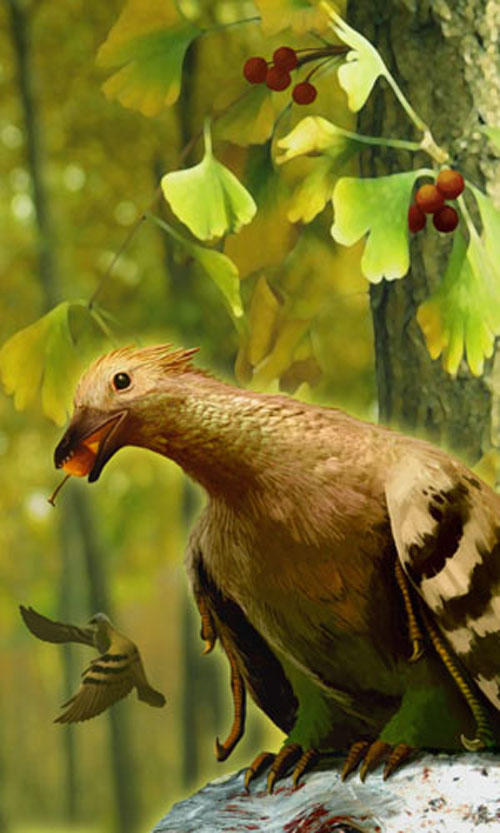Scientists from Institute of Vertebrate Paleontology and Paleoanthropology, Tianyu Museum of Nature in Shandong Province, China, and University of Kansas discovered early fossil evidence for the presence of a crop in birds, according to the Proceedings of the National Academy of Sciences.
The crop is characteristic of seed-eating birds today, yet little is known about its early history despite remarkable discoveries of many Mesozoic seed-eating birds in the past decade.
Two Early Cretaceous birds, the basal ornithurine Hongshanornis and a basal avian Sapeornis, demonstrate that an essentially modern avian digestive system formed early in avian evolution.

Sapeornis chaoyangensis (Lida Xing / Yi Liu)
In modern seed-eating birds the crop provides storage, so that a number of seeds can be gathered quickly and then processed later in a more secure location without interference from competitors or predators. The mucus in the crop softens hard seeds so that they are more easily ground by the gizzard. The gizzard may be a more basal feature for birds, because it is widely distributed in sister groups, such as modern crocodilians. In recent birds the gizzard is posterior to the proventriculus or glandular part of the stomach. The practice of collecting large numbers of small stones in the gizzard is characteristic of seed eaters among modern birds and is often correlated with a well-developed crop.
In extant birds a crop is a ventral pouch of the esophagus and is situated anterior to the shoulder girdle just in front of the furcula. In fossils its position is indicated by a roughly spherical mass of seeds that is easily discriminated from stomach contents by its location outside of the ribcage.
“Despite the discoveries of more than 30 genera of fossil birds from the Early Cretaceous lacustrine deposits in Northeastern China and many examples of dietary adaptations, it remains unknown whether a crop was present in these birds. Recently we examined hundreds of Early Cretaceous birds housed at the Tianyu Museum of Nature in Shandong Province, China, and found several specimens belonging to two taxa with unequivocal evidence of crops”, said Zheng Xiaoting, lead author and director of Shandong Tianyu Museum of Nature, China,
“One of them is Sapeornis, one of the basal birds presumed to have an herbivorous diet, and the second taxon is the basal ornithurine Hongshanornis. Both have preserved seeds in the anatomical location of the crop in extant birds. In some cases, even the soft tissue outline of the crop can be observed and resembles closely the structure in modern birds.”
The discovery of a crop in two phylogenetically remote lineages of Early Cretaceous birds and its absence in most intervening forms indicates that it was independently acquired as a specialized seed-eating adaptation.







